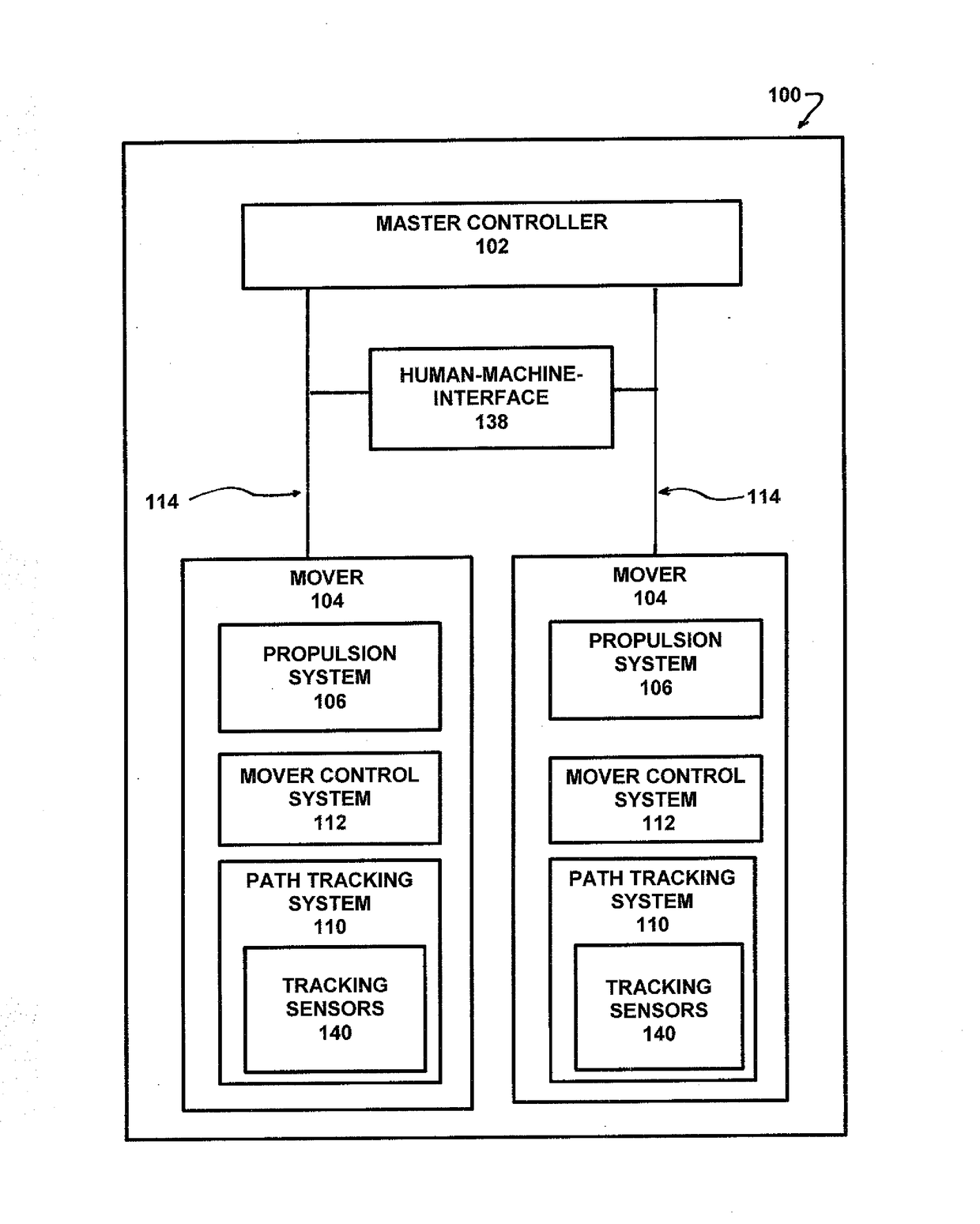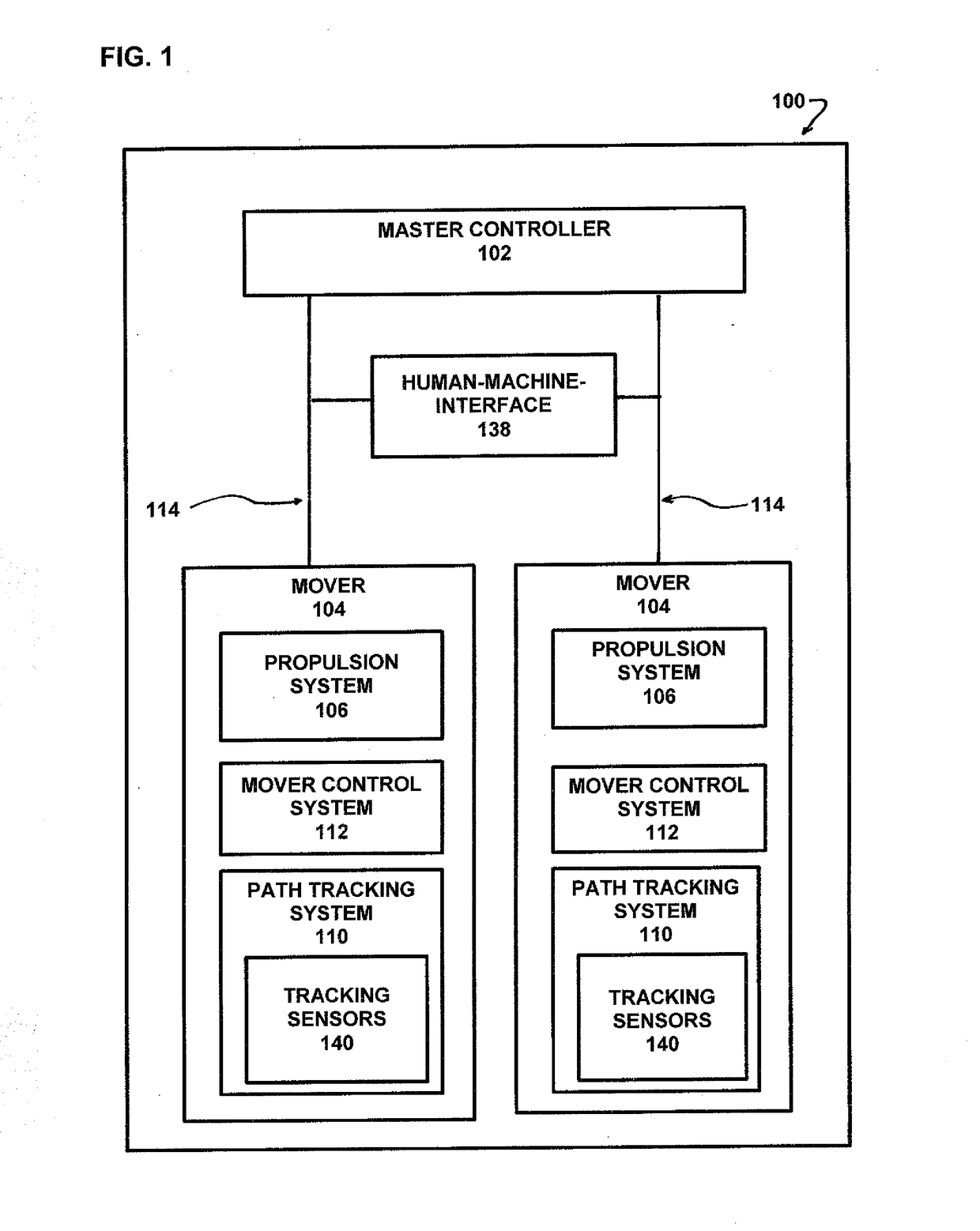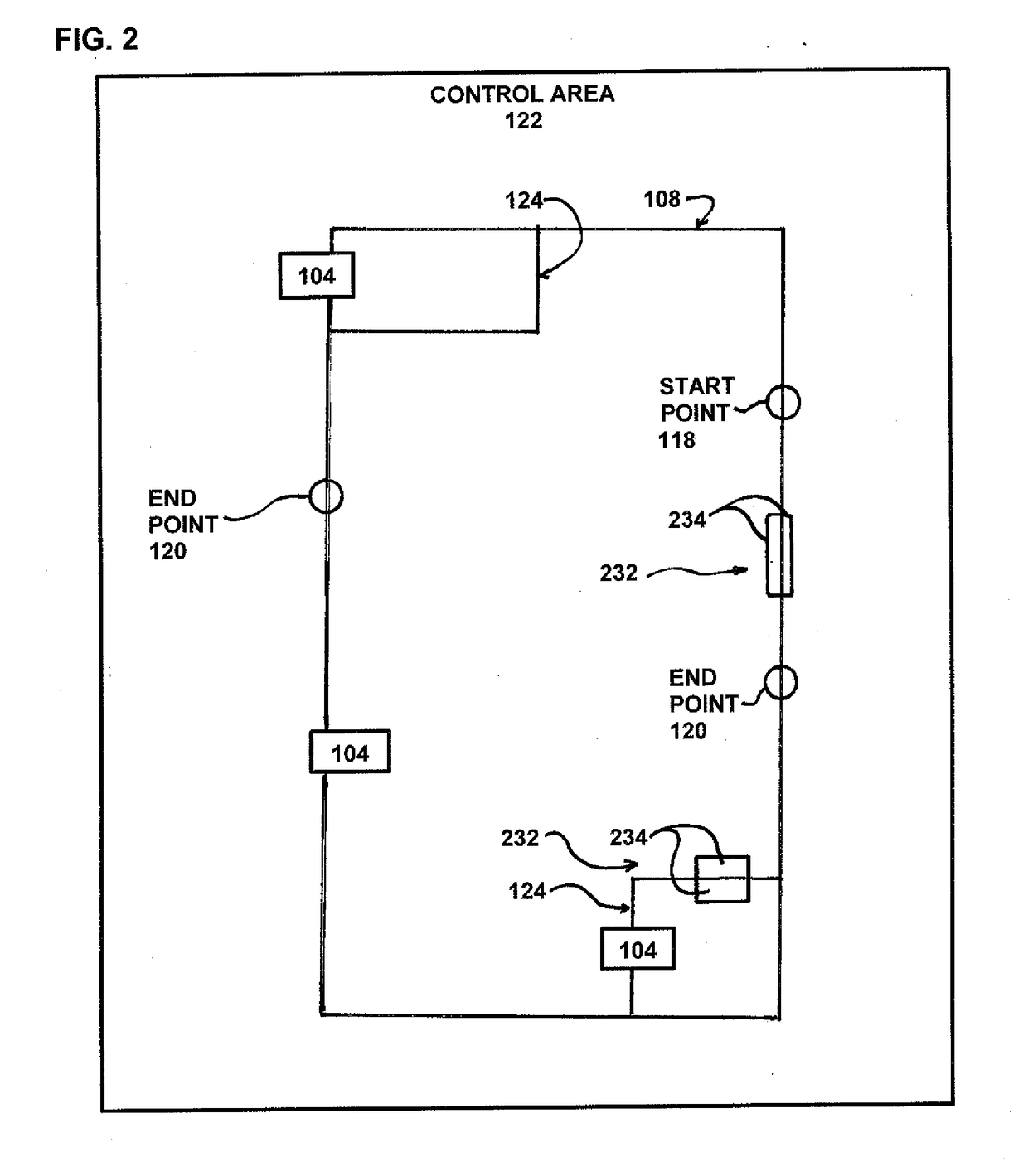Mover system
a moving system and moving wheel technology, applied in the direction of vehicle position/course/altitude control, process and machine control, instruments, etc., can solve the problems of affecting the speed of the entire assembly, the failure of the entire assembly operation, and the interruption or stop of the entire operation, so as to achieve the effect of reducing the pitch between the moving wheel and the moving wheel
- Summary
- Abstract
- Description
- Claims
- Application Information
AI Technical Summary
Benefits of technology
Problems solved by technology
Method used
Image
Examples
Embodiment Construction
[0079]The subject invention is a new and novel mover system for transporting objects from one location to another location such that each mover arrives at a selected destination at a predetermined scheduled time. In a preferred embodiment of the invention, the mover system is a trackless system whereby independent movers are freely driven along a predefined virtual vector path operating under the direction of a main controller that provides control commands having x and y components. In a preferred embodiment of the invention, each mover operates in forward and reverse velocities and can change directions to transport an object in a simulated assembly closed loop or reciprocating vector path between end points, such as production stations and / or loading and unloading stations, and then follow a return path back to a queuing area before arriving at an initial start point.
[0080]As used herein a platform is an x and y coordinate surface that a mover travels along having a vertical z ax...
PUM
 Login to View More
Login to View More Abstract
Description
Claims
Application Information
 Login to View More
Login to View More - R&D
- Intellectual Property
- Life Sciences
- Materials
- Tech Scout
- Unparalleled Data Quality
- Higher Quality Content
- 60% Fewer Hallucinations
Browse by: Latest US Patents, China's latest patents, Technical Efficacy Thesaurus, Application Domain, Technology Topic, Popular Technical Reports.
© 2025 PatSnap. All rights reserved.Legal|Privacy policy|Modern Slavery Act Transparency Statement|Sitemap|About US| Contact US: help@patsnap.com



